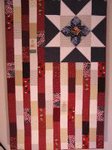I first posted this last May, but it never hurts to be reminded.
Patients (& friends) often ask me which sunscreen they should use. Often this is more for skin aging protection than sunburn protection. The answer is the same. The best sunscreen is the one they will use. It has to "feel" good to them--not be too greasy, not have the wrong scent, be the right consistency (lotion vs cream). It will not matter if it is SPF 15 or 3o if it never gets used. The next thing I tell them is to use it daily, all year around, especially on the face and neck. If they are in the habit of applying sunscreen to their face daily (even on overcast days), it won't be forgotten.
For a more scientific answer, you need both UVA and UVB protection. It is the UVA rays that are most responsible for wrinkling and aging the skin. It is the UVB rays that are the most responsible for the sunburn. The best sunscreen is at least an SPF 15 and has a sunblock component also. The SPF rating reflects the product's ability to screen or block UVB rays only. SPF 15 blocks approximately 93 percent of all incoming UVB rays. SPF 30 blocks 97 percent; and SPF 50 blocks 99 percent. To protect against the UVA rays, the product needs to have avobenzone (Parsol 1789), ecamsule (Mexoryl), titanium dioxide, or micro-zinc oxide.
- Apply the sunscreen 20-30 minutes before going outside.
- Use enough. To ensure that you get the full SPF of a sunscreen, you need to apply 1 oz – about a shot glass full.
- Reapply after getting out of the water or toweling off. Even "water-proof" sunscreens are not usually "towel-proof".
- Reapply every two hours when outside at a beach, etc. for adequate protection.
- Use even on a cloudy day. Up to 40 percent of the sun's ultraviolet radiation reaches the earth on a completely cloudy day.
- Shield your eyes with UV-blocking sunglasses. Squinting caused wrinkles around the eyes. The UV rays can cause cataracts.
- Wear a wide-brim hat to help protect your head & neck.
- Don't forget to apply lip balm with SPF 15 or higher.
The Skin Cancer Foundation grants its Seal of Recommendation to products that meet the Foundation's criteria for effective UV sun protection products. If you use a product make especially for the face (ie MD Forte Total Protector SPF 30 or Clinique's Super City Block Oil Free Daily Face Protector SPF 25) it will be less likely to cause skin irritation or acne outbreak with daily use. So spend more money on the face and then if you need to save money, do so on the body sunscreen (ie NO-AD SPF 30 Sport Ultra Block Lotion, Coppertone Water Babies Sunscreen SPF 45).







2 comments:
Ecamsule (Mexoryl) is com*pletely* genius. I have *never* been so consistently pale as I've been since I switched from Neutrogena with Parsol to LaRoche-Posay's Anthelios SX, which is one of the (three?) Mexoryl preparations available in the US.
I'm the color of skim milk, and I don't tolerate much sun exposure, period, but with Anthelios, I feel comfortable with both incidental exposure (car to building) and some purposeful exposure (by the pool). I live in Seattle, but spend a couple of weeks a year in Phoenix, and let me tell you, this has changed how I feel about being outside during daylight hours.
In fact, your post reminds me that tomorrow is the day I start using daily sunscreen again (the UV index in Seattle is never high enough to matter between the fall and spring equinoxen to merit sun protection - more like antioxidants so I don't rust). Thank you for the reminder!
E
You are so welcome Eric. And thank you for the comment on Mexoryl.
Post a Comment